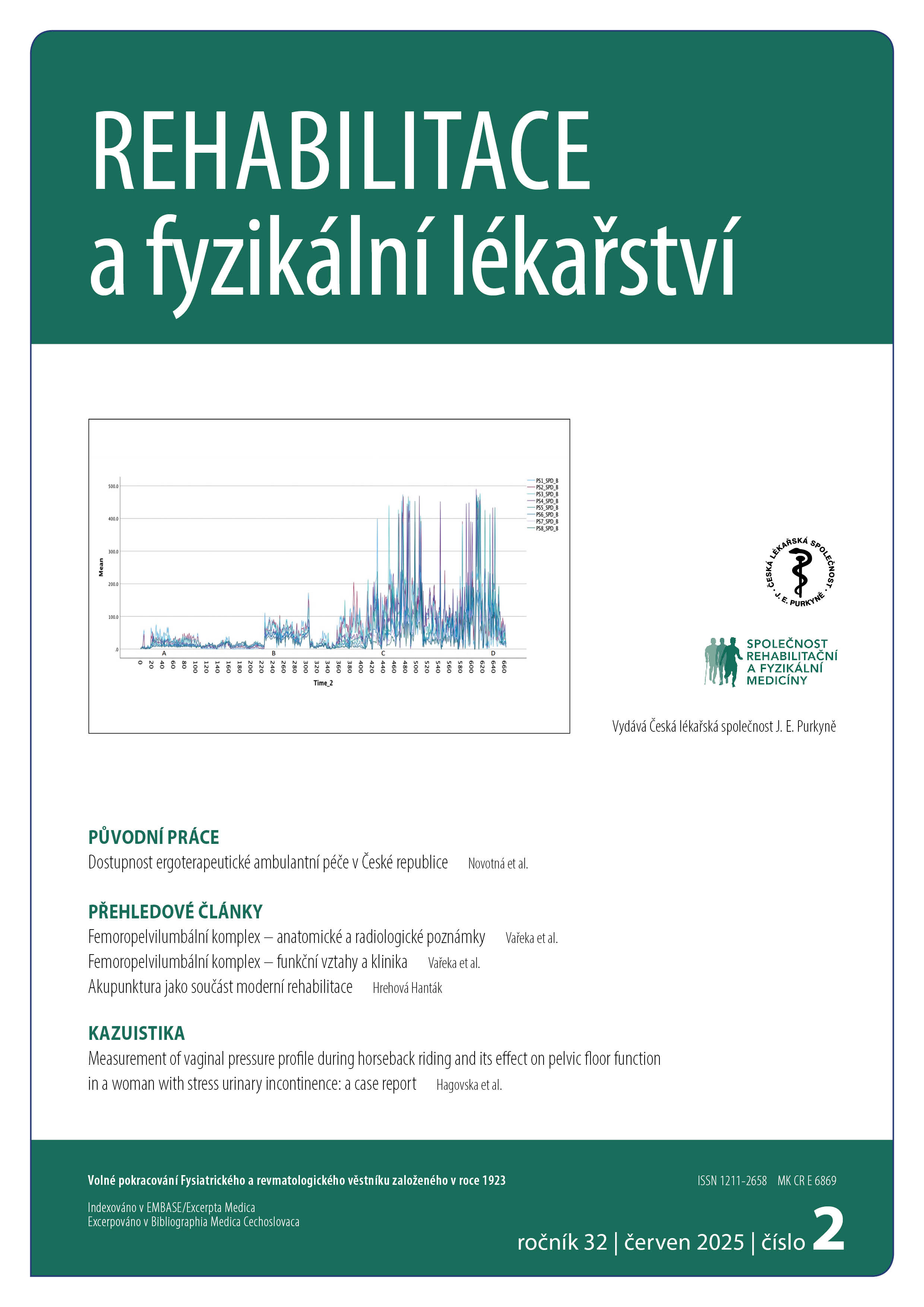Availability of Outpatient Occupational Therapy Care in the Czech Republic
Keywords:
Occupational Therapy, Czech Republic, Outpatient, AvaibilityAbstract
SUMMARY
Background: Occupational therapy is one of the non-medical health professions and for many years has been associated primarily with care in inpatient settings. However, over the past few years, occupational therapy has developed at the outpatient level, but until now there has been no comprehensive data to support this care and thus support the indication of outpatient occupational therapy (OOT) by physicians.
Aim: The aim of this thesis is to point out the existence of occupational therapy clinics in the Czech Republic and their availability in individual regions.
Methods: In 2023, a list of contracted health service providers for OOTs was requested from individual insurance companies. The numbers of occupational therapy facilities by insurance company were filtered and then a back check was performed to verify the accuracy of the results for occupational therapy providers. In addition, the most frequently reported occupational therapy codes according to the National Health Information Portal for 2022 were compiled.
Results: Based on the data obtained, there are 94 occupational therapy clinics in the Czech Republic with at least 1 contract with a health insurance company. The highest availability of OOT is provided by the health insurance companies OZP (n = 80) and VZP (n = 70) and the lowest by ZPMVČR (n = 31). The highest number of OOT clinics is located in the Moravian-Silesian Region (n = 26) and Prague (n = 16), while the lowest number is in the Vysočina Region (n = 0) and the Pilsen Region (n = 1). The most reported occupational therapy codes for 2022 are individual basic occupational therapy (n = 271 484), training in activities of daily living - ADL (n = 212 249) and group basic occupational therapy (n = 61 021).
Conclusion: This work presents the first comprehensive data on the status of OOT in the Czech Republic, which points to its existence and should increase doctors awareness of the possibility of its indication via FT voucher. It is important to emphasize that this analysis includes only facilities with contracts with health insurance companies, while private facilities are not included. It can be assumed that the actual number of facilities providing OOT is likely to be higher. Further research in this area is necessary.

